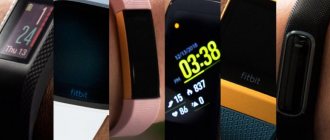What to look for when choosing
To enjoy the product for a long time, it is necessary to take into account the following selection criteria during purchase:
- Braking system. The electromagnetic braking system sets the training program, and the mechanism changes the load level in accordance with the set program. Such models are often used for therapeutic and rehabilitation purposes.
- Noise level and comfort of use. Before purchasing an exercise bike, you need to check the noise level and ease of use, as some models can drown out the TV and phone calls during operation.
- Popularity of the manufacturer. When choosing, it is also recommended to pay attention to the brand; the most famous are Kettler, HouseFit, Body Sculpture, Torneo. The fame factor guarantees the high quality and reliability of the simulator.
- Purpose of acquisition. Decide what effect you want to achieve from a home exercise machine first. Goals can be very different: from losing weight to preventing cardiovascular diseases. Of course, with a very expensive model you can do anything and achieve good results in any area.
- Additional accessories. Think carefully about which additional accessories you need and which you can easily do without. Sometimes this or that detail can increase the comfort of using the device - or, on the contrary, make it more inconvenient and expensive. Give priority to the parameters that really matter to you, rather than to discreet design solutions.
Kinds
In this article we will look at the types of this sports equipment.
- Mechanical. The work is based on a manual method of adjusting the resistance of the pedals. The design is represented by an ordinary flywheel. Mechanical exercise bikes are divided into two types: belt and shoe (inertial). In the first case, braking is controlled by durable belts. In inertial-type simulators, braking occurs as a result of the impact on the flywheel with the help of pads attached to it. Mechanical models reliably convey the feeling of riding a real bicycle. These are fairly inexpensive exercise machines, so they are in wide demand.
- Magnetic. In these exercise bike models, the flywheel is slowed down using the magnetic principle. The magnet itself is located near the flywheel. To regulate the load, it is necessary to change the distance between the flywheel and the magnets. The magnetic type of exercise equipment is characterized by smooth running, quiet operation and reliability. Parts do not wear out as much as in mechanical models, which means you will not have to spend money on repairs.
- Electromagnetic. The mechanism of operation is similar to magnetic exercise bikes. Here the load arises due to the influence of the electromagnetic field on the flywheel. An electrical connection is required, so there should always be an outlet nearby. This is the most modern and technologically advanced type of exercise equipment, durable and silent. Most often, electromagnetic devices are equipped with software and a display displaying important information (pulse, distance, load level, number of calories burned).
Operating principle and design of an exercise bike
An exercise bike almost completely imitates a regular bicycle, except that it does not have the usual wheels and is stationary. The user sits on the saddle, holds the handles and spins the pedals - that’s all the wisdom.
The heart of any exercise bike is the flywheel, or flywheel, which swings under pressure from the pedals and provides resistance through a variety of load systems (we'll talk more about these later). The stronger the resistance, the more intense and productive the workout will be.
The greater the mass of the flywheel, the smoother and softer the move will be, as well as the more reliable and stable the structure as a whole - you definitely won’t fall into a “ditch”. If you are taller than average and weigh more than a hundred pounds, then pay attention to models where the flywheel weighs from six kilograms.
During the training process, all actions are recorded by the “on-board computer” - the digital display will display data on the current speed, distance traveled, calories burned and other useful measurements. They are not particularly accurate, but you can get a general idea.









